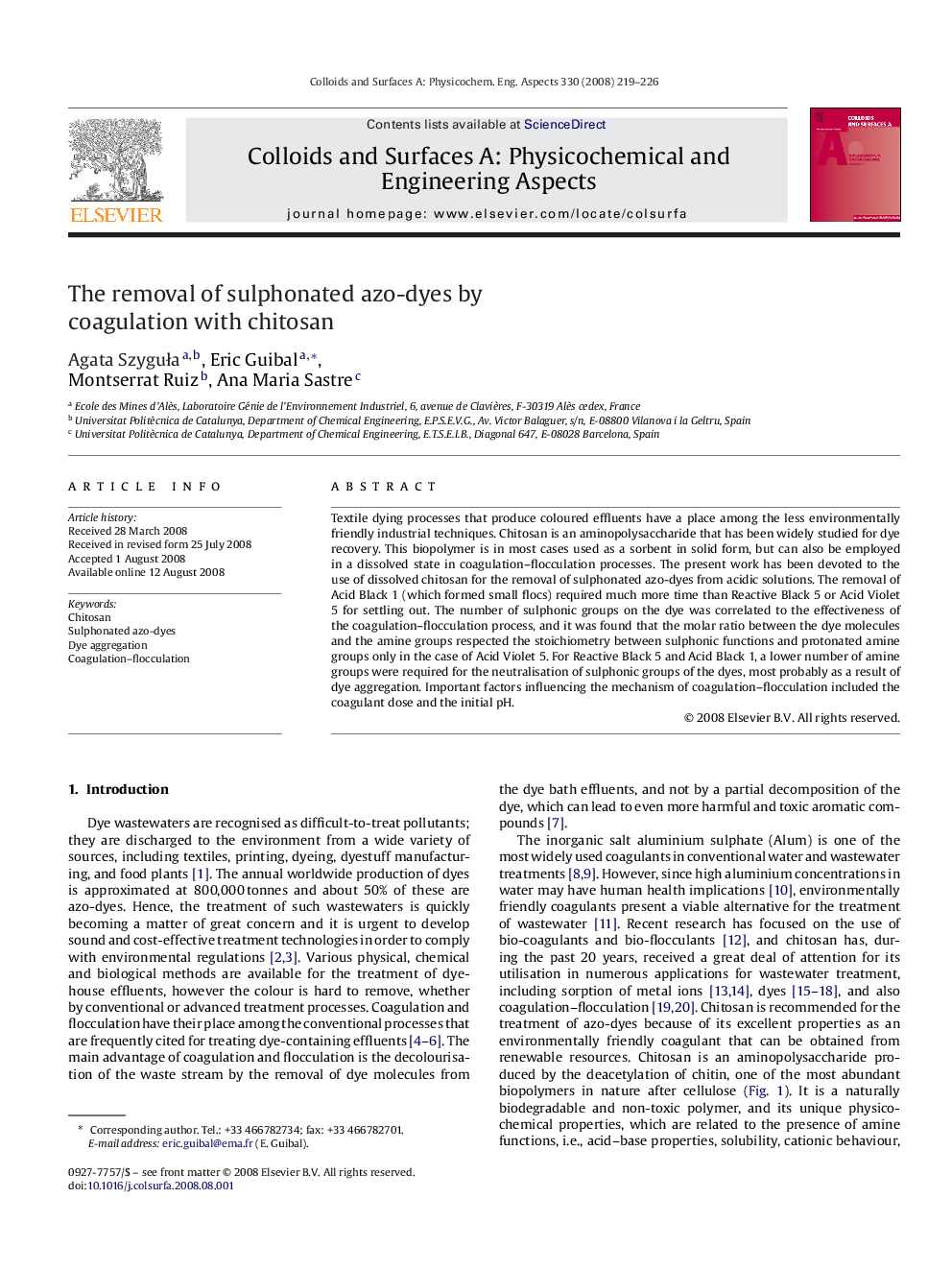| Article ID | Journal | Published Year | Pages | File Type |
|---|---|---|---|---|
| 596443 | Colloids and Surfaces A: Physicochemical and Engineering Aspects | 2008 | 8 Pages |
Textile dying processes that produce coloured effluents have a place among the less environmentally friendly industrial techniques. Chitosan is an aminopolysaccharide that has been widely studied for dye recovery. This biopolymer is in most cases used as a sorbent in solid form, but can also be employed in a dissolved state in coagulation–flocculation processes. The present work has been devoted to the use of dissolved chitosan for the removal of sulphonated azo-dyes from acidic solutions. The removal of Acid Black 1 (which formed small flocs) required much more time than Reactive Black 5 or Acid Violet 5 for settling out. The number of sulphonic groups on the dye was correlated to the effectiveness of the coagulation–flocculation process, and it was found that the molar ratio between the dye molecules and the amine groups respected the stoichiometry between sulphonic functions and protonated amine groups only in the case of Acid Violet 5. For Reactive Black 5 and Acid Black 1, a lower number of amine groups were required for the neutralisation of sulphonic groups of the dyes, most probably as a result of dye aggregation. Important factors influencing the mechanism of coagulation–flocculation included the coagulant dose and the initial pH.
